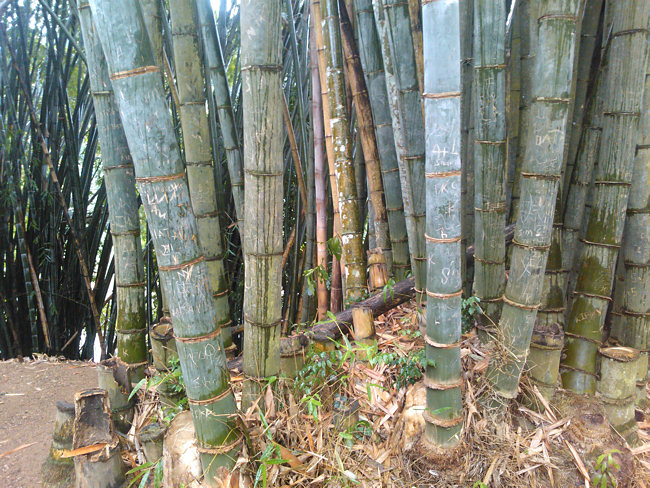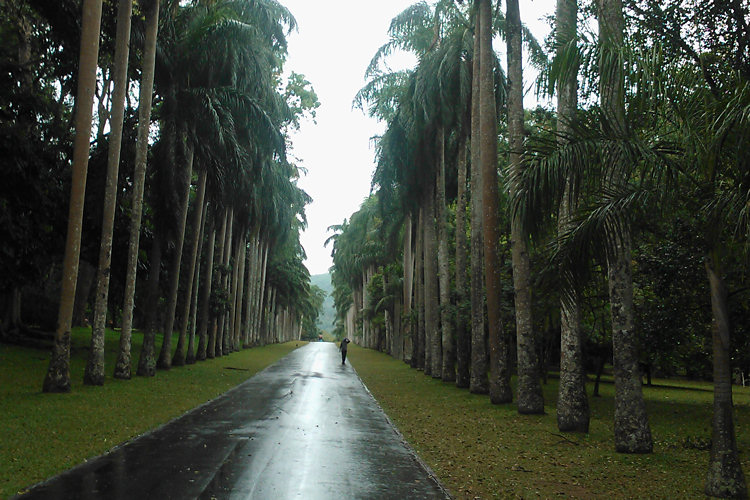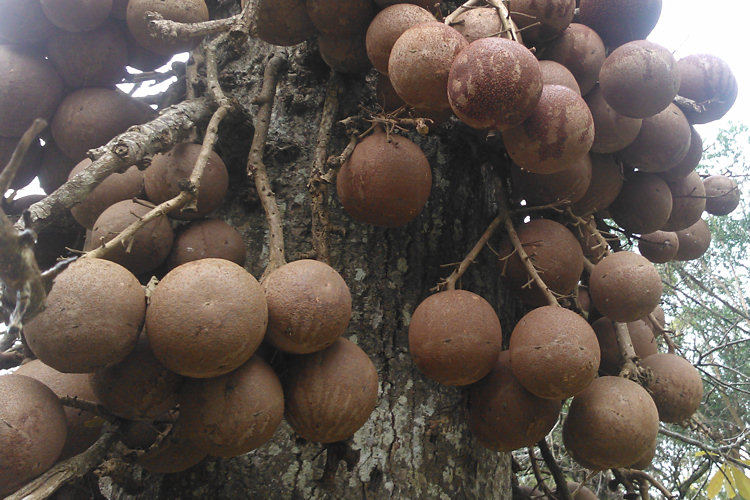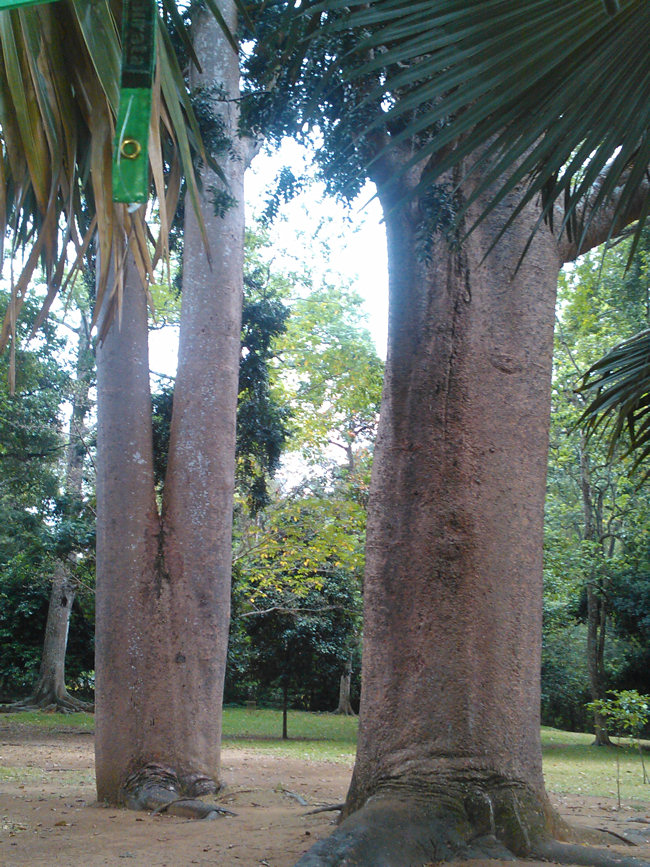Peradeniya Royal Botanical Garden's Trees
Make sure you walk down the majestic Royal Palm Avenue in Peradeniya Royal Botanical Garden. It was planted in 1950 and then head towards the small suspension bridge. Head back along the river path that is lined with large bamboo. Look up in the tree tops. This is where we saw the giant fruit bats.

Bamboo in Kandy Peradeniya Royal Botanical Garden
Remember the slippery path. Take care. If it has been raining do not wear sandals or flip-flops. Be very careful walking through wet grass. The leeches live in the trees and shrubs. When it rains heavily leeches get washed away and end up on the ground. Check your feet and legs regularly for blood sucking leeches.
The first Superintendent of the Royal Botanical Gardens was Alexander Moon. The south west portion of the garden was cleared. Coffee and Cinnamon were the first species to be planted and tested. He listed the botanical and native names of over 1,127 indigenous plants in a publication called 'Catalogue of Ceylon plants' in 1824.
Other successive Superintendents combed the hills of Sri Lanka for new plants. The main driving force was to find species that had a commercial value that could then be exploited by the British Empire. The scientific preservation and identification of plants was secondary. A lot of research was conducted into the medical properties of the local plants and the findings were published.

Royal Avenue in Kandy Peradeniya Royal Botanical Garden
As the collection grew more of the 147 acres was cleared and landscaped into the attractive gardens you see today. One of the more peculiar functions of the gardens is as a place where courting couples come to find peace and quiet, away from the prying eyes of their relations.
Make sure you visit an area on the garden map called 'Double Coconut'. Either side of the path there are trees from Australia that have colossal trunks. Look out for the cannon ball trees planted amongst the coconuts palms. The double coconut palms produce the largest seeds in the plant kingdom. If you did not realise it, that is what a coconut is, a giant seed. They take five years to mature. There are over 200 species of palms in the Kandy Botanical Gardens.
The history of the Royal Botanical Gardens goes back to 1371 when the Sinhalese King Wickramabahu III set up his Royal court by the side of the Mahaweli Ganga (Ganga means river). A Royal garden was established between 1747 and 1780 by King Kirti Sri.

Cannon Ball Tree in Kandy Peradeniya Royal Botanical Garden
As you walk along the peaceful river path it is hard to imagine that you are near a historic war zone. On the north side of the river a battle raged between the Portuguese invaders and the Sri Lankan King Rajasinghe II. It happened on 28th March in 1638 and resulted in a historic victory for the Sinhalese people. It was called the battle of Gannoruwa. The Portuguese were led by commander Diogo de Melo de Castro. He had 900 Portuguese men at arms and 5,000 mercenaries.
It is believed that he suffered 4,000 casualties. This was the fourth time that the Portuguese had tried to capture the hill top kingdom of Kandy. The previous three times had resulted in failure. King Rajasinghe II had started to negotiate with the Dutch to help him deal with the occupying Portuguese. The Captain General Diogo de Melo de Castro was aware of this and therefore intensified his efforts.
The king's scouts informed him of his enemy's advances. He was able to evacuate the town of Kandy so when the Portuguese arrived all they found was empty buildings. They sacked and burnt the town down to the ground in their fury. They started to march back to Colombo but found the route blocked at Gannoruwa. They had walked into a trap. The King had chosen his battle ground well. He was able to cut off all escape routes and surround them. Only 33 Portuguese soldiers were left alive after the Sinhalese army attacked. The dead were beheaded and the heads were piled up in front of the king. The rest of the Portuguese were driven out of Sri Lanka by the Dutch in 1658.

Giant Australian Trees in Kandy Peradeniya Royal Botanical Garden
It was the British that finally beat the Sinhalese kingdom of Kandy. The famous botanist Sir Joseph Banks, who had accompanied Captain Cook on his famous vogue of discovery, set up the Royal Botanical Gardens in Kew in London. As part of this thirst for scientific understanding of the plant kingdom he advised that a similar garden be set up in Sri Lanka (then known as Ceylon) to enable the collection of different tropical plant spices and their seeds for study.
The first garden was set up on Slave Island in Colombo in 1810. In 1821 it moved to it's present location in Peradeniya, Kandy. The climate was more favourable for the cultivation of economically important plants on a larger scale. The main objective of botanical gardens is research. Different plants of the same type are planted to see which produces the best fruit, the greater yield or was the most pest resistant. They were outside laboratories unlike today where most people consider them places of beauty where plants are displayed in landscaped gardens.
Travel books

